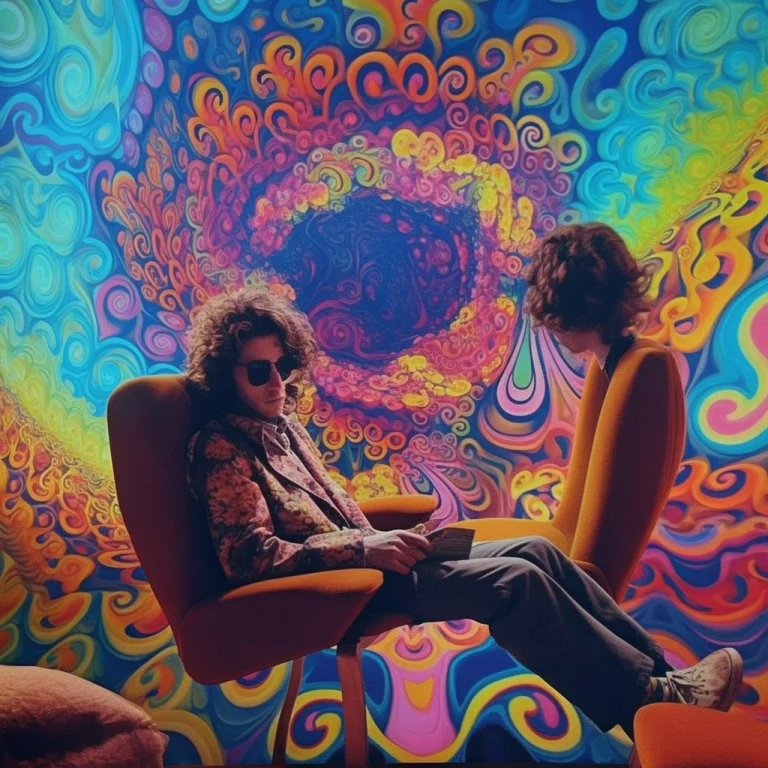Lysergic acid diethylamide (LSD) is a potent psychedelic compound initially synthesized in 1938 by Swiss chemist Albert Hofmann. This substance gained widespread attention during the counterculture movement of the 1960s, primarily due to its profound effects on perception, cognition, and consciousness. Understanding the nature of LSD, its effects, duration, and appropriate dosage, is key to ensuring safe and responsible use. In this article, we will explore these aspects in detail.
Understanding LSD
LSD, colloquially known as “acid,” is a synthetic hallucinogen derived from ergot, a fungus that grows on rye. Its chemical structure resembles that of serotonin, a neurotransmitter that plays a crucial role in mood regulation and sensory perception. LSD rose to cultural significance during the 1960s counterculture movement, where it was used as a tool for self-exploration, artistic expression, and unconventional thinking. Despite its cultural significance, LSD is classified as a Schedule I substance in many countries, implying a high potential for abuse and no recognized medical use.
Effects of LSD
LSD induces a range of psychedelic effects that can significantly alter perception, cognition, and mood. Users often report sensory enhancement, visual hallucinations, and synesthetic experiences—like “seeing sounds” or “hearing colors.” Besides these perceptual alterations, LSD can evoke profound introspection, ego dissolution, and emotional and spiritual insights. Recent research from organizations like the Multidisciplinary Association for Psychedelic Studies (MAPS) suggests that LSD might have therapeutic potential for several mental health conditions, such as depression, anxiety, and post-traumatic stress disorder (PTSD).
Duration of LSD Effects
Typically, the onset of LSD effects occurs 30 to 90 minutes after ingestion, reaching peak intensity around 2 to 4 hours into the experience. The acute psychedelic effects generally last between 6 to 12 hours, followed by an “afterglow” period marked by lingering perceptual changes and introspective insights. The duration can be influenced by various factors, including the dosage taken, individual metabolism, and the psychological and environmental context—known as set and setting—of the LSD experience.
Dosage Considerations
LSD dosage can vary widely, depending on the desired effects and individual tolerance levels. Microdosing involves consuming sub-perceptual doses of LSD, typically around 10 to 20 micrograms, purported to boost cognitive performance, mood, and creativity without eliciting full-blown psychedelic experiences. For recreational or therapeutic use, standard doses usually range from 50 to 200 micrograms. First-time users are advised to start with lower doses to gauge their sensitivity and response to the substance. The effects of LSD are non-linear, meaning doubling the dose does not necessarily result in double the intensity of effects. Higher doses may also increase the likelihood of experiencing psychological distress.
Factors Affecting LSD Experience
Several factors can influence the LSD experience, including set, setting, and individual variations. “Set” refers to the mindset, psychological state, and expectations of the user, while “setting” describes the physical and social environment in which LSD is consumed. A supportive, safe, and comfortable setting can significantly contribute to a positive LSD experience. Personal factors like personality traits, mental health history, and individual vulnerabilities also play a role. Given LSD’s interaction with the brain’s serotonergic system, certain medications, like selective serotonin reuptake inhibitors (SSRIs), may interfere with its effects. Consulting a healthcare professional or therapist before consuming LSD is strongly recommended, especially if one is on any medication or has a mental health condition.
Harm Reduction and Safety Guidelines
Harm reduction practices are essential for LSD use. Ensuring accurate dosing through reliable sources and testing methods, like reagent test kits, can prevent the ingestion of adulterated or misidentified substances. Creating a safe and supportive environment, such as having a trusted trip sitter present, can help navigate challenging experiences. Managing set and setting, practicing self-care, and being aware of potential risks and side effects promote physical and psychological well-being during the LSD experience.
Potential Risks and Precautions
While LSD poses a low risk of physical harm, psychological risks must be acknowledged and managed. Intense and unpredictable LSD experiences can lead to challenging or overwhelming states, often termed “bad trips.” Individuals with underlying mental health conditions like schizophrenia, bipolar disorder, or a history of psychosis, may be at higher risk of adverse reactions. Long-term effects of LSD, such as hallucinogen persisting perception disorder (HPPD)—marked by persistent visual disturbances—warrant careful consideration. For LSD-assisted therapy, proper screening, preparation, and integration support from trained professionals are required to mitigate potential risks and enhance therapeutic outcomes.
Conclusion
Understanding LSD’s effects, duration, and dosage is critical for safe and responsible use. LSD’s profound impact on perception, cognition, and mood makes it a powerful tool for therapeutic exploration and personal growth. By understanding its effects, duration, and dosage guidelines, individuals can approach LSD experiences with greater knowledge and awareness, maximizing potential benefits and minimizing potential risks associated with this potent psychedelic compound.
[gap height=”130px”]
[ux_image id=”8401″]
[gap height=”130px”]
We hope that you have gained a little more understanding and wisdom after reading through our article about LSD. We hope that it has inspired you to explore the multitude of possibilities through LSD.
Shroomhub is your trusted online source in Canada for all things Psychedelic, from Magic Mushrooms, LSD and even DMT, take advantage of our weekly deals and bargain prices you wont find anywhere else!
[gap height=”130px”]
[message_box]
[row v_align=”middle” h_align=”center”]
[col span=”9″ span__sm=”12″]
Author
Freelance Writer
Leo Thomas
[/col]
[col span=”2″ span__sm=”12″ align=”center”]
[button text=”Linkedin” color=”white” style=”outline” radius=”99″ link=”https://www.linkedin.com/in/leo-thomas-24b827279/”]
[/col]
[/row]
[/message_box]




